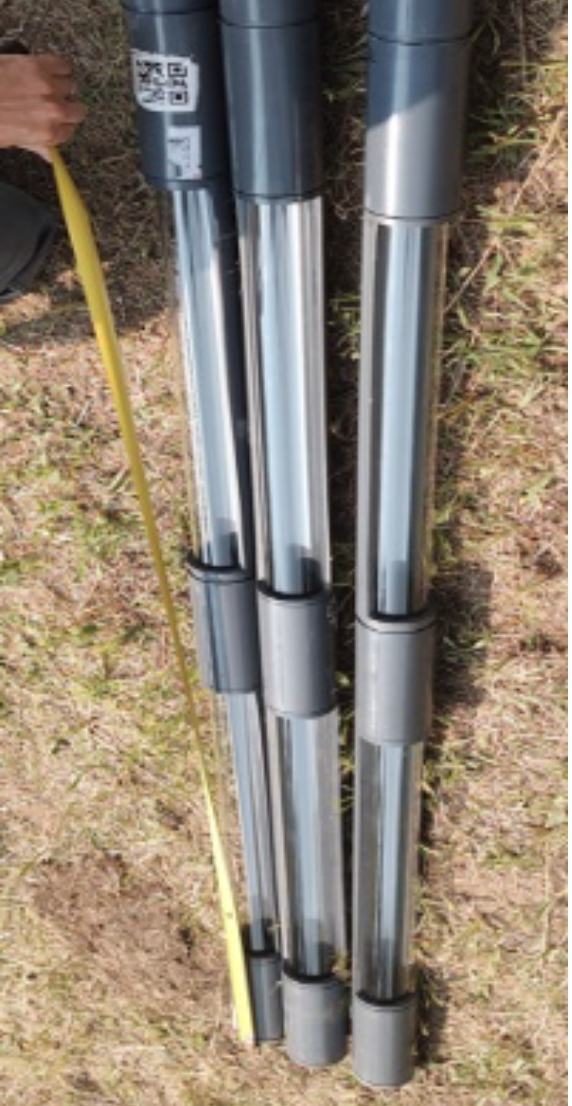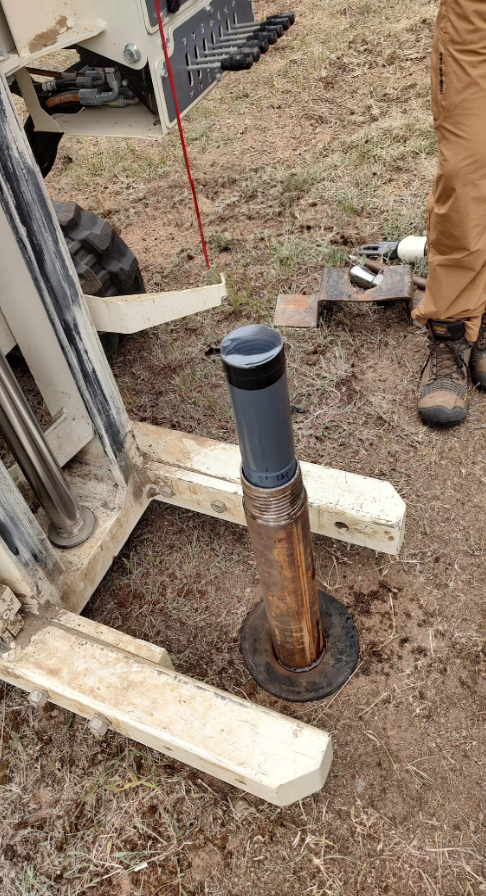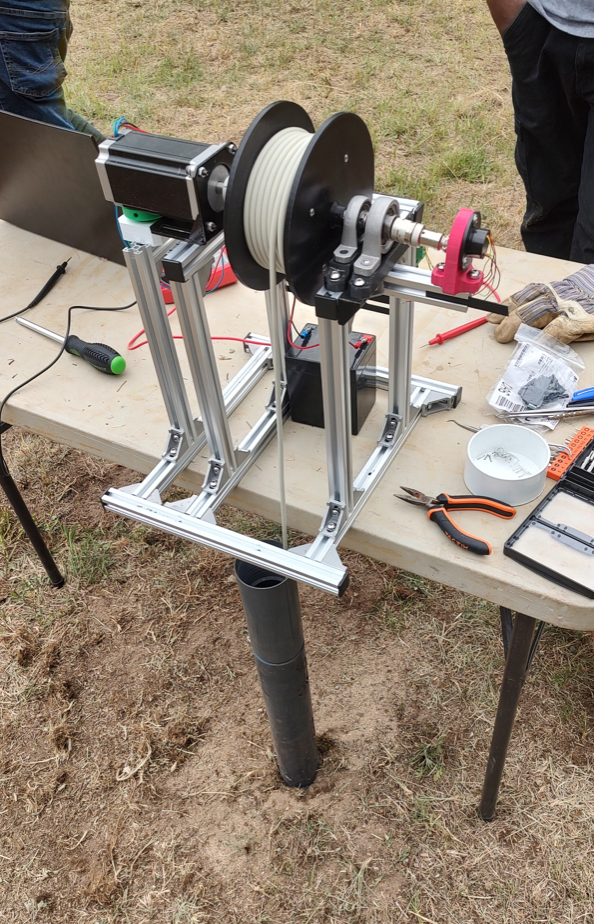Product Overview
Good Decisions Require Accurate Data:
Current HRSC tools are most often used once due to logistic and cost constraints. E-Flux has developed a non-destructive UV-based-alternative that adds a time-dependent dimension to HRSC data.
E-Flux Clear-Well is a transparent port, able to be surveyed on demand with a portable instrument. Surveying the exact same locations allows for direct comparisons of data surveyed at different times.
Each survey uses both white and UV lights. Each image shows detailed formation lithology overlapping the contaminant distribution. This type of information is key for understanding the mechanisms driving LNAPL mobility and stability at field sites under changing conditions.
Installation Overview:
Clear-Well Installation is Nearly Identical to That of Monitoring Wells:
The use of Clear-Well requires a single installation by a non-specialized driller using standard direct push techniques. Once installed, the port can be surveyed repeatedly on demand.
Clear-Well is made of standard 2.5 in nominal size PVC casing, custom machined to host a thick wall borosilicate (pyrex) glass tube. Observations through the optically clear glass provide details of formation materials and contaminant distributions down to approximately 20 µm (about the thickness of a human hair).
Repeated surveys will add the benefit of capturing changes in contaminant distributions due to:
Performance Remedy: Mass Removal/Destruction achieved by Remedies
Natural Source Zone Depletion
Changes in Site Conditions (groundwater table levels, geochemical changes, etc)
Clear-Well Applications Are Endless
Clear-Well Provides Effective Methods To:
Monitoring wells are the largest pores in the formation and are not representative. Clear-Well is ideal for:
Performance monitoring of active remediation techniques.
Identify LNAPL thin films (sheens)
Provide a detailed contaminant profile over the actual lithology
Our proprietary software transforms digital images into depth-dependent soil saturation profiles. Further, repeat the surveys to track quantitative changes with time.
Detailed pore pore scale information will provide proof of geochemical changes, natural source zone depletion, biogas production and LNAPL mobility.









